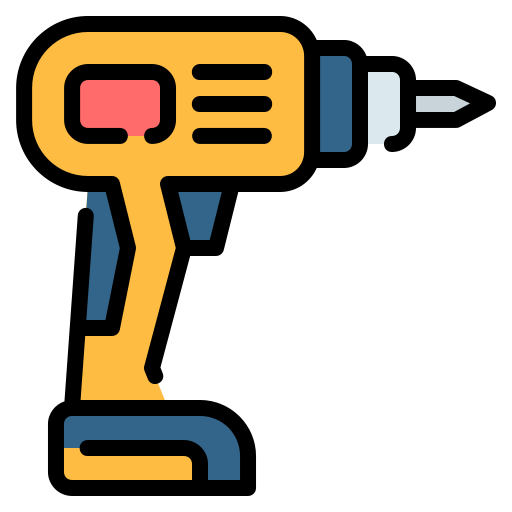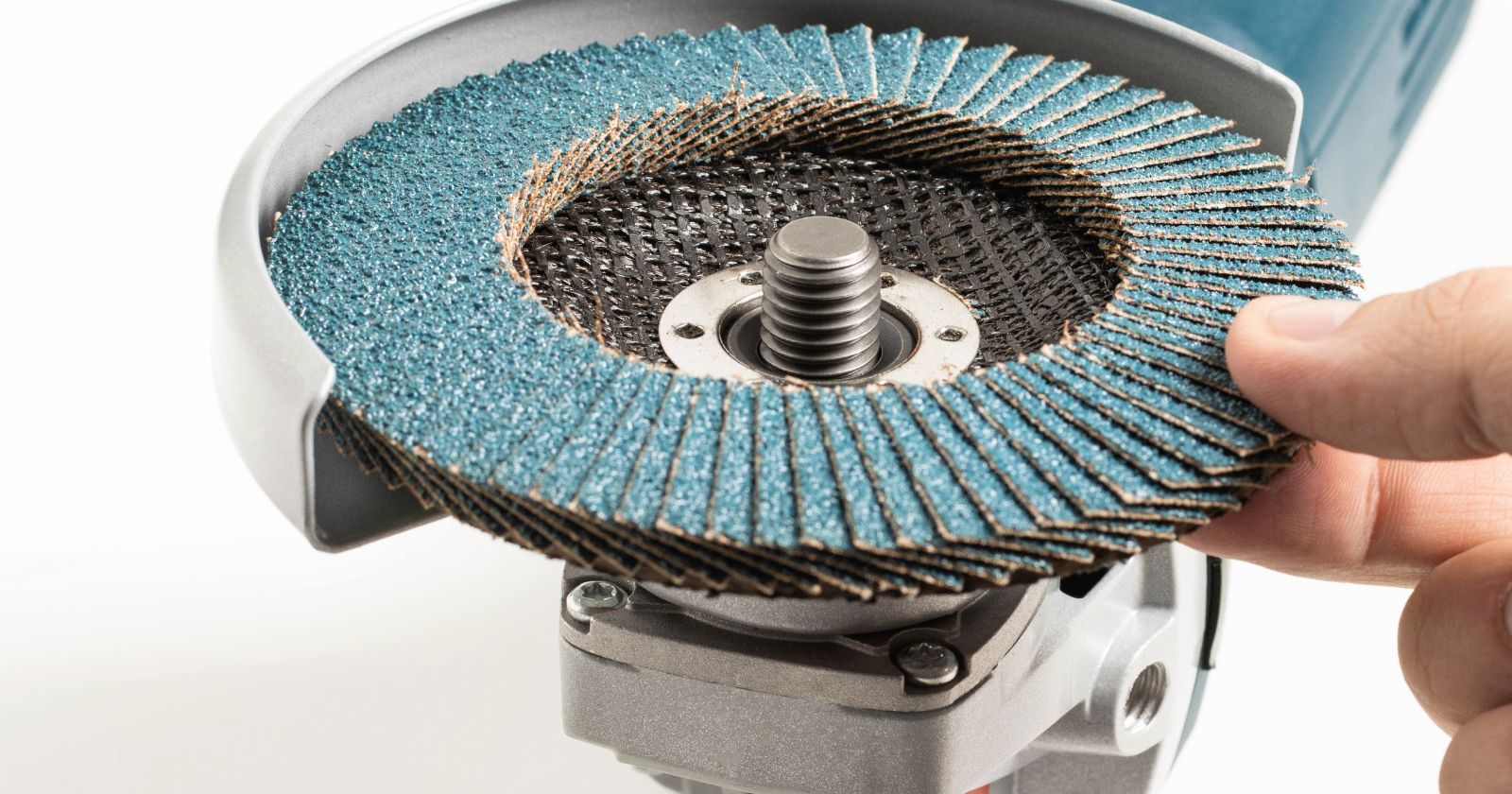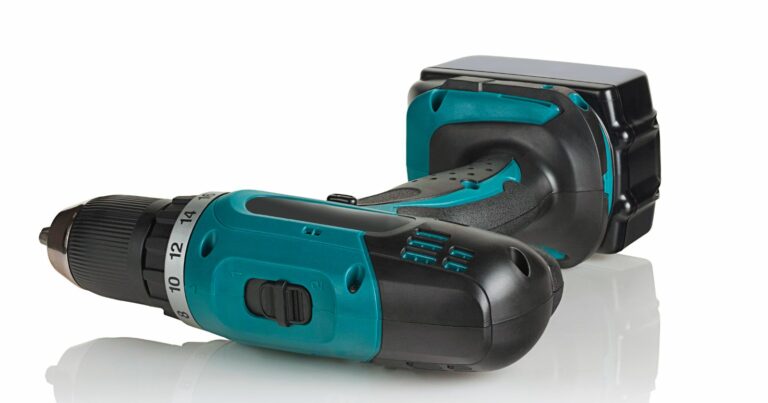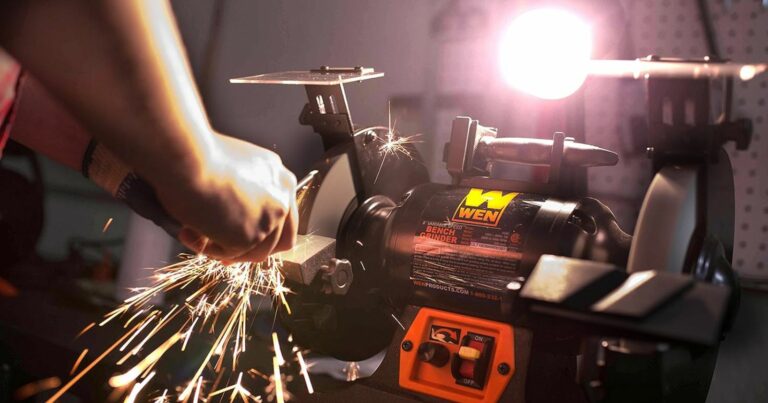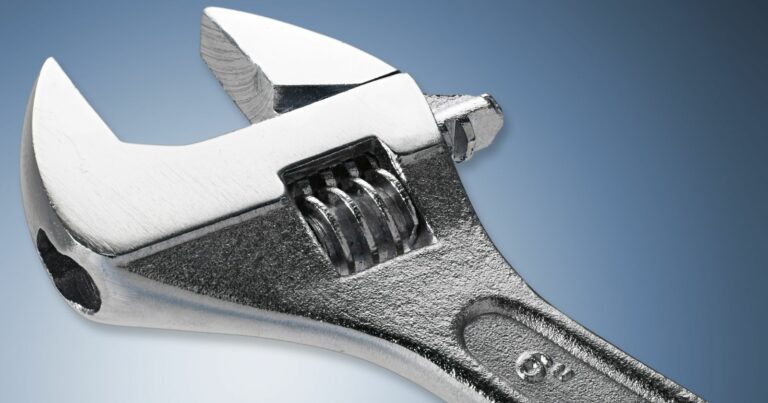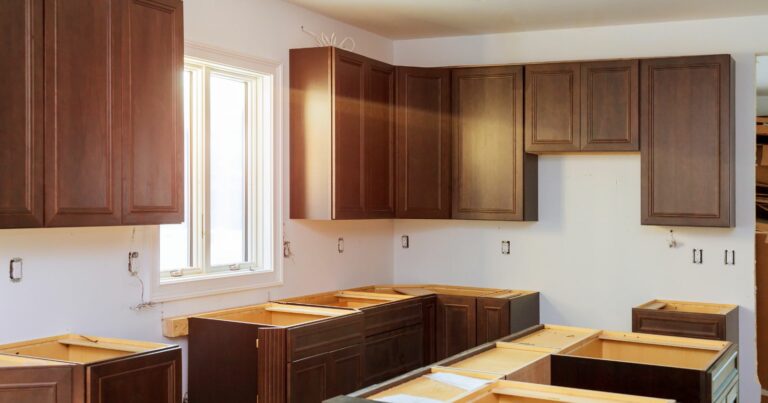The 11 Best Wood Grinder Wheels In 2024
Welcome to my journey through the captivating realm of woodworking, a place where the age-old art of craftsmanship seamlessly blends with today’s cutting-edge technology. If you’re like me, a woodworking aficionado, you’ve probably amassed an arsenal of tools that simplify your projects and elevate their complexity. Among my go-to gadgets, the angle grinder is a game-changer, especially when equipped with the best wood grinder wheel. Gone are the days when I had to painstakingly chisel away or use hand saws for every cut. Now, angle grinders have completely transformed how I tackle woodworking, from effortless cutting and sanding to crafting intricate designs with surgical precision.
Section A: Angle Grinder Attachments Based on Woodworking Activities
1. Attachment for Wood Cutting: Saw Blade
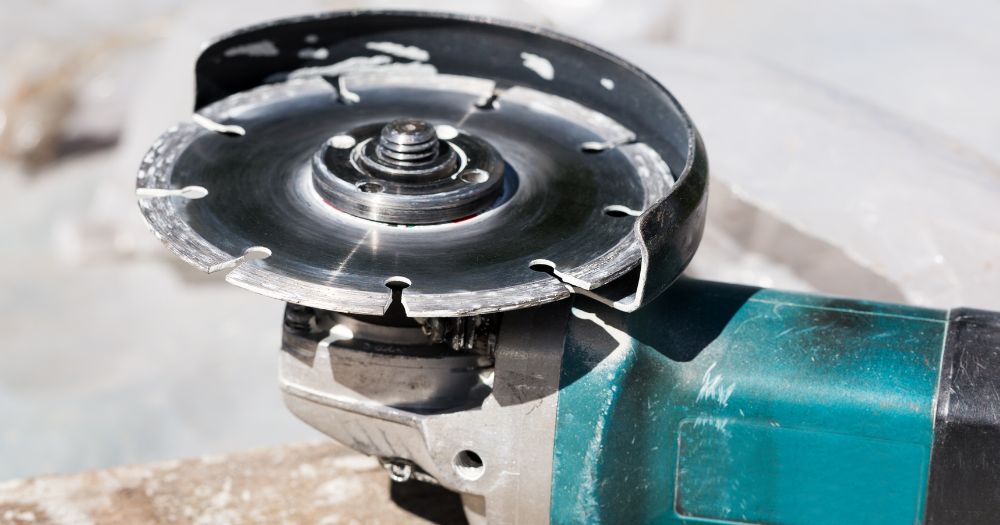
The Saw Blade’s Role in Wood Cutting
When it comes to making those initial cuts in a woodworking project, nothing beats the efficiency of a saw blade attachment for your angle grinder. This attachment allows you to slice through wood with ease, turning large pieces into manageable sizes. It’s like having a portable table saw right at your fingertips.
Safety First: Precautions with Saw Blades
However, it’s crucial to remember that saw blades can be hazardous if not used correctly. Many angle grinder manufacturers actually discourage the use of saw blades due to the risks involved. If you decide to go this route, always wear appropriate safety gear, including eye protection and gloves. Make sure the blade is securely attached and always cut away from yourself. Exercise extreme caution to avoid kickback, which can happen if the blade binds up in the material.
Shop angle grinder saw blade available at:
2. Attachments for Sanding and Grinding Wood: Abrasive Flap or Sanding Disc
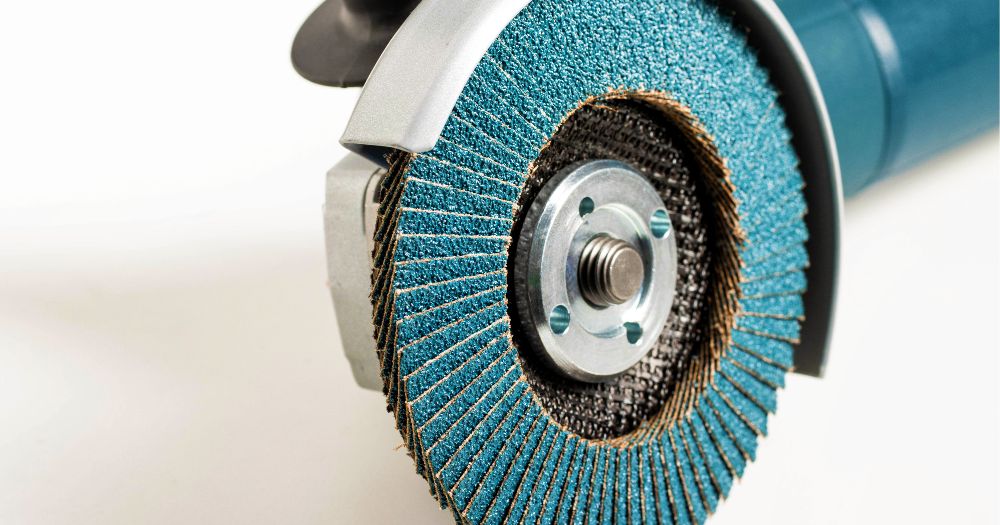
The Magic of Abrasive Flap Discs
After you’ve made your initial cuts, you’ll likely need to smooth out those rough edges. That’s where abrasive flap or sanding discs come in. These attachments are perfect for giving your wood a smooth finish, removing any splinters or rough patches.
Tips for Safe and Effective Sanding
When using these discs, always be mindful of the angle at which you’re applying the grinder. Too steep an angle can cause the disc to dig into the wood, damaging both the tool and the material. If your flap disc comes with a guard, use it. It’s there for a reason—to protect you and your workpiece.
Shop angle grinder sanding disc available at:
3. Attachments for Wood Carving and Shaving: Abrasive Cutting Disc and Carving Wheels
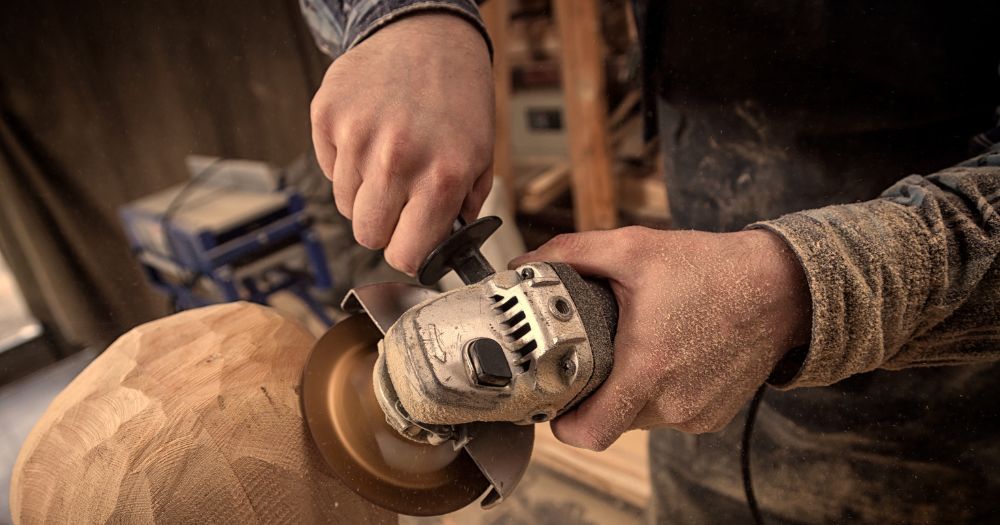
Types of Abrasive Cutting Discs and Carving Wheels
Once your wood is cut and sanded, you might want to add some artistic flair or intricate details. Abrasive cutting discs and carving wheels are your go-to attachments for this. These discs come in various materials like aluminum oxide, silicon, and zirconium, each designed for specific carving depths and details.
Safety Precautions and Potential Hazards
Be aware that using cutting wheels on wood can be risky. Wood is combustible, and the high-speed rotation of the wheel can generate a lot of heat, posing a fire risk. Always work in a well-ventilated area and keep a fire extinguisher nearby. Also, be prepared for flying wood chips; eye protection is a must.
Shop angle grinder carving wheels available at:
4. Attachment for Surface Preparation: Non-woven Abrasive Wheels
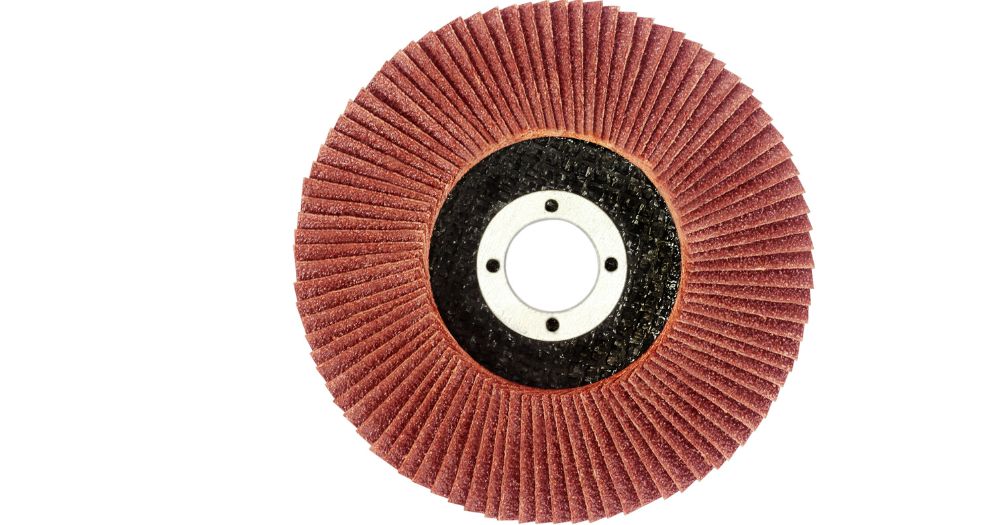
The Final Touch: Non-woven Abrasive Wheels
After all the cutting, sanding, and carving, you’ll want to give your project that final touch of professionalism. Non-woven abrasive wheels are perfect for this. These wheels are made from synthetic fibers bonded together by abrasive agents, ideal for polishing, cleaning, and even scouring your wood.
Advantages of Using Non-woven Abrasive Wheels
One of the best things about these wheels is that they’re non-conductive, making them a safer option for your woodworking needs. They’re also excellent for diffusing heat, reducing the risk of combustion. These wheels give your project a polished look, making all your hard work stand out.
And there you have it four essential angle grinder attachments that I find indispensable in my woodworking journey. Each serves a unique purpose and, when used correctly, can significantly elevate the quality of your projects. Stay tuned as we delve deeper into other attachments and their applications. Happy woodworking!
Shop angle grinder non-woven abrasive wheels available at:
Section B: Attachments to Turn Your Angle Grinder into a Multi-Tool for Woodworking
5. Wood Saw Attachment
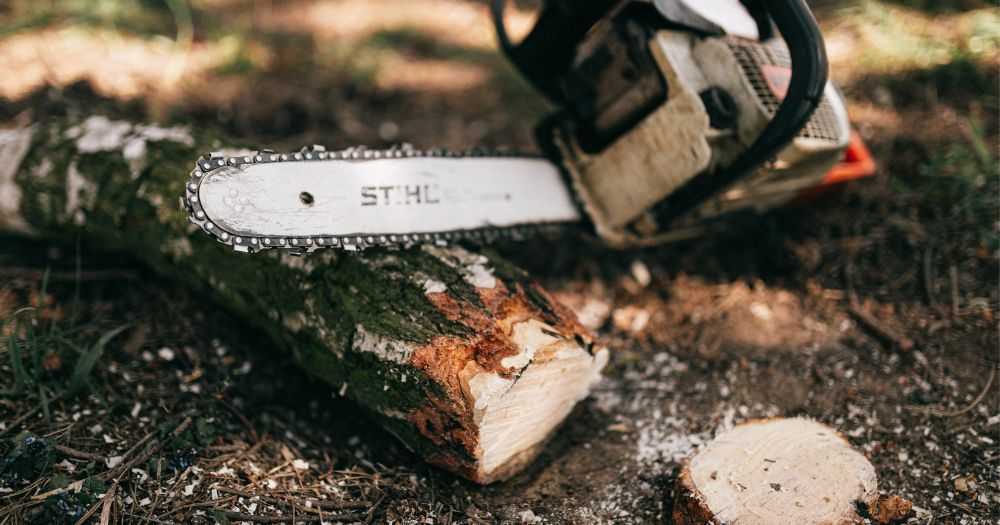
My Take on Types of Wood Saw Attachments
In my woodworking journey, I’ve found that the variety of wood saw attachments for angle grinders is nothing short of amazing. From hacksaws and jigsaws to traditional hand saw attachments, there’s something for every type of cut you could imagine be it plain, curved, or concave. It’s like having a Swiss Army knife for wood cutting!
Safety and Skill Level: My Advice
Let me be clear: using a wood saw attachment isn’t child’s play. The high RPMs can make the tool a handful, especially if you’re just starting out. Always, and I mean always, read the manufacturer’s guidelines and suit up with the right safety gear like eye protection and gloves. If you’re a newbie, consider getting some hands-on experience with less intimidating saws before you attach a wood saw to your angle grinder.
Shop angle grinder saw attachments available at:
6. Wood Chisel Attachment

The Artistic Side of Wood Chisel Attachments
Think of wood chisel attachments as the paintbrushes of the woodworking world. They let you add those intricate details and fine cuts that turn a good project into a great one. Whether you’re scraping off glue, paint, or rust, or going for more artistic cuts and motifs, these attachments have got you covered.
My Guide to Types of Chisels and Their Uses
Chisels come in all shapes and sizes, each with its own specialty. You’ve got everything from flat and beveled edges for general-purpose work to V-grooves and dovetails for more artistic endeavors like sculpting and architectural model designing. And let’s not forget the heavy-duty chisels for tasks like chopping and splitting.
Shop angle grinder wood chisel attachments available at:
7. Drill Chuck Attachment
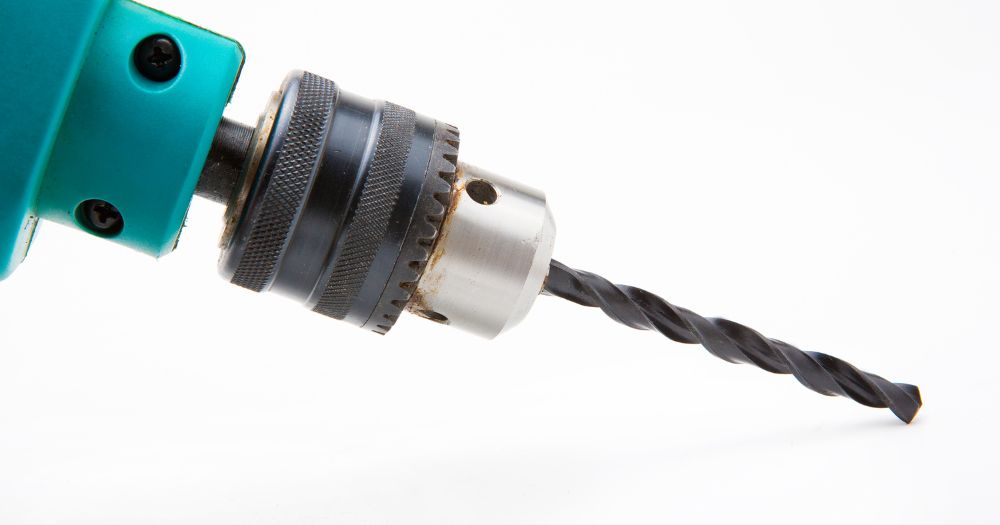
What’s a Drill Chuck? Let Me Tell You
A drill chuck is a game-changer. It’s a specialized attachment that lets your angle grinder hold a drill bit or other cutting tools, essentially turning it into a high-powered drill. The possibilities? Endless.
Keyed vs. Keyless Chucks: My Two Cents
You’ve got two main options here: keyed and keyless chucks. Keyed chucks give you that extra torque but can be a bit fussy since they require a key to tighten. Keyless chucks are generally more user-friendly but might offer less torque. Choose based on your project’s needs and how much precision you’re aiming for.
Shop angle grinder drill chuck attachments available at:
8. Wood Belt Sander Attachment
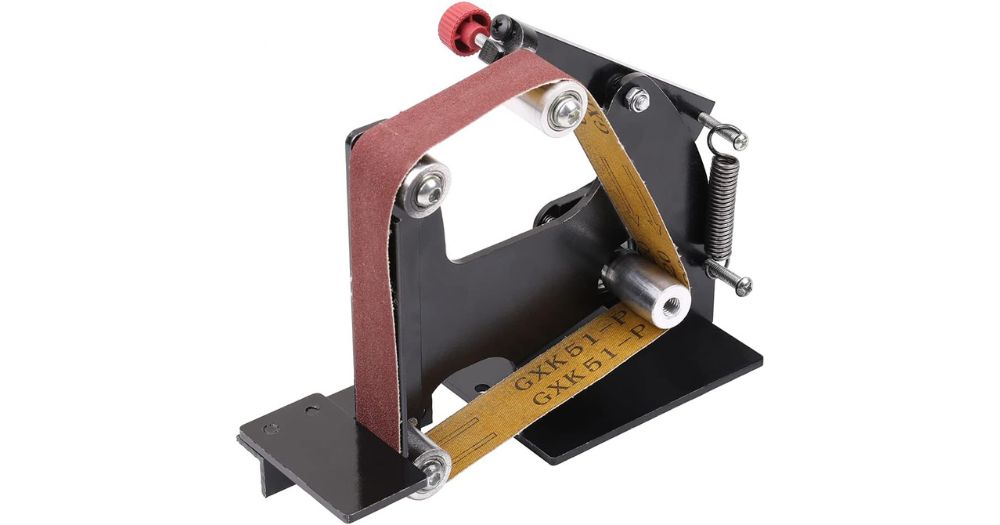
Why I Love Wood Belt Sander Attachments
A wood belt sander attachment is like having a mini sanding station. It’s perfect for those large surface areas that need a lot of sanding love. Trust me, this attachment will make your life a whole lot easier and your projects a whole lot smoother.
Battery-Operated vs. Electric: My Experience
Here’s the deal: battery operated sanders give you the freedom to move around but often have a limited battery life. Electric sanders, on the other hand, offer more power and unlimited run time, but you’ll be tethered to a power outlet. Choose based on your project’s scope and your workspace.
So there you have it—my personal insights into four angle grinder attachments that have expanded my woodworking capabilities in ways I never thought possible. Each comes with its own set of pros and cons, but all of them open up a world of creative possibilities. Stay tuned for more of my thoughts and tips on the ever-expanding world of angle grinder attachments. Happy woodworking!
Shop angle grinder belt sander attachments available at:
Section C: Expanding Your Horizons—Angle Grinder Attachments Beyond Wood
9. Buffing, Padding, and Polishing Wheels Attachments

What I Love About These Attachments
Let me tell you, buffing, padding, and polishing wheels are like the magicians in my angle grinder toolkit. They add that final flourish to my projects, whether I’m aiming for a glass-like finish or a protective sheen. And the best part? These attachments aren’t just for wood; they work wonders on metal, glass, concrete, and ceramic too.
The Secret Ingredients
These wheels are crafted from a medley of materials like cotton, felt, and even natural wood for padding. Each material brings its own unique flair to the table. For example, I often turn to cotton wheels when I want that ultimate, mirror-like polish, while felt wheels are my go-to for adding protective layers like carnauba wax.
Shop angle grinder polishing wheels available at:
10. Diamond Cutting Blades Attachments

The Might of Diamond Cutting Blades
Diamond cutting blades are the titans of cutting attachments. They slice through almost anything with incredible precision. While they’re a staple for metalwork, they can be a bit too much for softer materials like wood.
Safety Isn’t Optional
If you’re considering using a diamond cutting blade on wood, tread carefully. These blades pack a punch and generate a ton of heat, which could be a fire hazard. I always make sure to gear up with eye protection and heat-resistant gloves, and I double-check that my workspace is well-ventilated and free from flammable materials.
Shop angle grinder diamond cutting blades available at:
11. Wire Brush Attachments

The Unsung Heroes: Wire Brushes
Wire brush attachments are the unsung heroes in my angle grinder arsenal. They excel at polishing, deburring, and removing contaminants from a variety of surfaces, including wood, metal, and concrete.
How to Pick the Perfect Wire Brush
Wire brushes come in a variety of materials, from brass and carbon to stainless steel. Each has its own set of pros and cons. For example, I use brass brushes for more delicate cleaning tasks, while stainless steel brushes are my choice for jobs that require a bit more muscle. When choosing a wire brush, I consider the surface I’ll be working on, the level of abrasion I need, and any corrosive elements I might come across.
So there you have it, my personal take on angle grinder attachments that extend beyond the realm of woodworking. These attachments bring a level of versatility to my angle grinder that makes it a truly multi-purpose tool. Whether I’m working on wood, metal, glass, or any other material, there’s likely an attachment that can elevate my work. Stay tuned for more of my tips and insights into the world of angle grinder attachments. Happy crafting!
Shop angle grinder wire brushes available at:
FAQs: The 11 Best wood grinder wheel In 2024
Navigating the world of angle grinder attachments can be a bit overwhelming, especially if you’re new to woodworking or looking to expand your toolset. That’s why I’ve put together this FAQ section to address some of the most common questions you might have. These answers aim to provide quick, straightforward insights that could be featured in Google’s People Also Ask (PAA) section. So let’s dive in!
What are the most essential angle grinder attachments for woodworking?
The most essential angle grinder attachments for woodworking are saw blades for cutting, abrasive flap or sanding discs for sanding and grinding, and carving wheels for detailed wood carving. These attachments cover a broad range of woodworking tasks, making your angle grinder a versatile tool in your workshop.
Is it safe to use angle grinder attachments without experience?
While angle grinder attachments can make woodworking tasks easier and more efficient, they also come with their own set of safety risks. It’s crucial to read the manufacturer’s guidelines and adhere to all safety precautions, including wearing appropriate safety gear like goggles, gloves, and ear protection. If you’re new to woodworking, consider gaining experience with less powerful tools before moving on to an angle grinder and its various attachments.
Can I use angle grinder attachments for materials other than wood?
Absolutely, many angle grinder attachments are versatile enough to be used on a variety of materials. For instance, buffing, padding, and polishing wheels can work on metal, glass, and even ceramic surfaces. Diamond cutting blades are primarily designed for metals but can also cut through wood. However, always make sure to read the manufacturer’s guidelines to ensure that the attachment is suitable for the material you intend to work on.
I hope these FAQs have cleared up some of your questions and made you more confident in exploring the wide range of angle grinder attachments available. Remember, the right attachment not only makes your job easier but also opens up new possibilities in your woodworking projects. Stay safe and happy crafting!
Watch This Video And Learn The 11 Best Wood Grinder Wheel In 2023
Final Words: My Personal Take on the Art and Science of Choosing the Right Angle Grinder Attachments
As I wrap up this in-depth guide, let me emphasize just how crucial your choice of angle grinder attachments is. These aren’t mere accessories; they’re game-changers that can make or break your woodworking projects. Picture them as the interchangeable lenses on a high-end camera, each offering its own unique capabilities and limitations. The right lens err, attachment can elevate your project from “pretty good” to absolutely stunning.
Thank you for joining me on this enlightening journey. I’m eager to hear about the amazing projects you’ll undertake with your newfound knowledge and tools. Until we meet again in the ever-evolving world of woodworking, stay safe, stay inspired, and above all, keep crafting!
